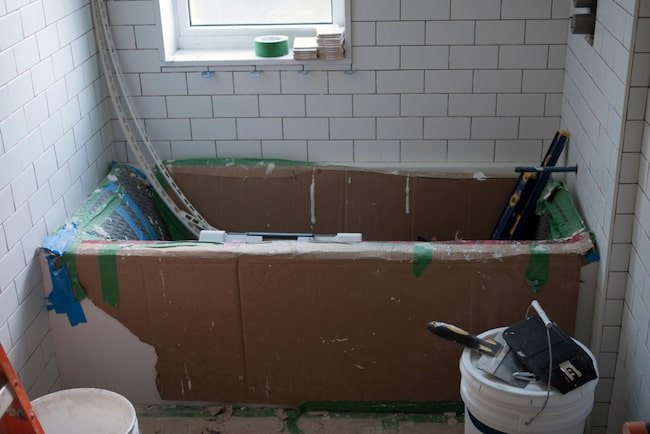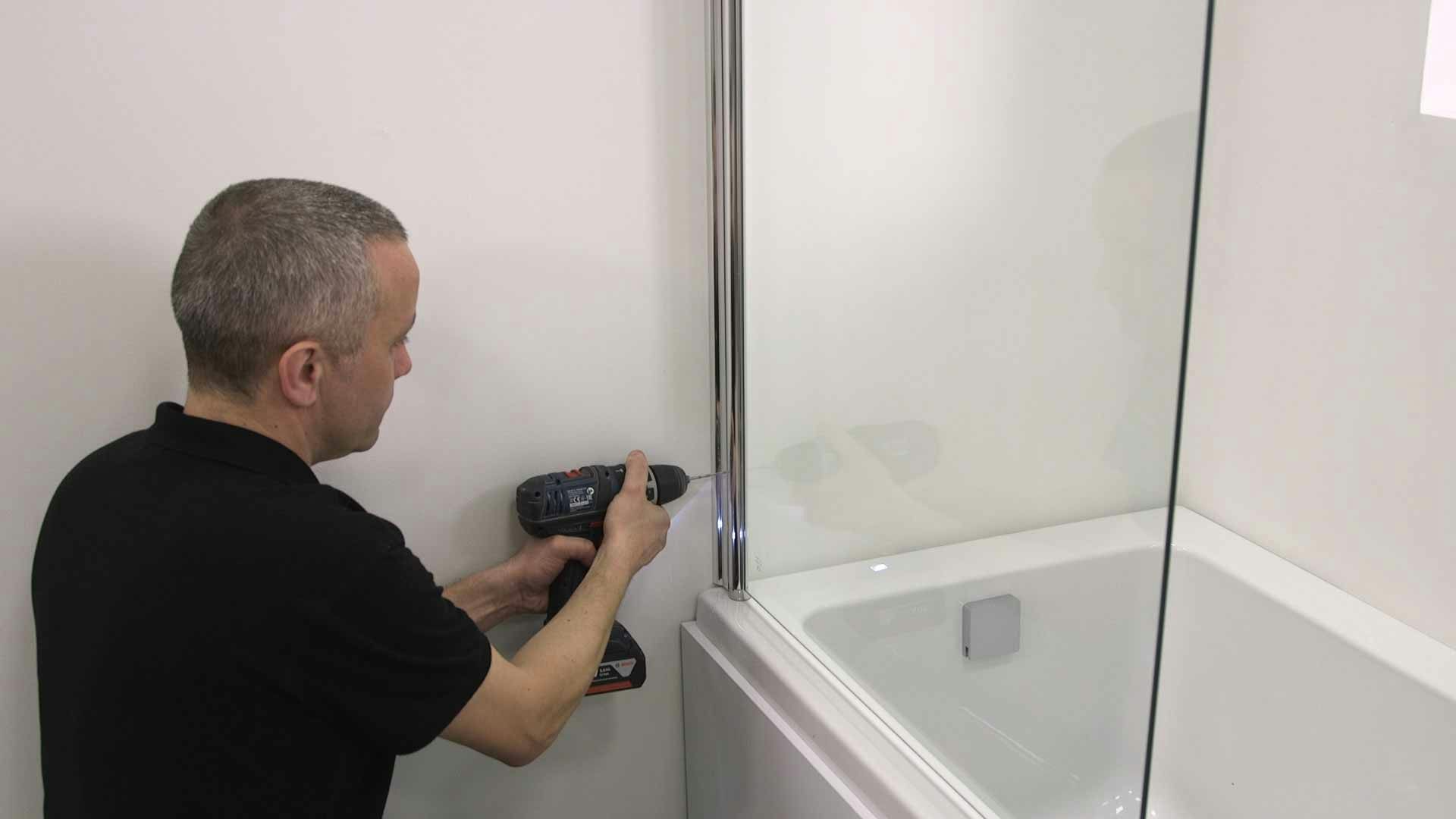Plumbing 101-Your Plumbing Crash Course: A Guide to-Tips for Installing a Bathtub-Bathtub Installation
Plumbing 101-Your Plumbing Crash Course: A Guide to-Tips for Installing a Bathtub-Bathtub Installation
Blog Article
We have unearthed this great article pertaining to Tools You Need to Install a New Bathtub down the page on the net and accepted it made sense to talk about it with you in this article.

Setting up a tub isn't specifically brain surgery, but it does require strong plumbing, carpentry, and occasionally, tiling skills. Changing an old tub with a brand-new one is also a reasonably hard job. If the old bathtub is readily obtainable, the job can move immediately; if you have to open a wall surface to get rid of the old tub and also place the brand-new bath tub, the job is much harder. In either instance, the project is within a home handyman's skills, although you will need an assistant to move out the old bathtub and also set in the brand-new one. Make certain you have actually certified yourself for the work and fit attempting it. Instead of working with a professional to take control of a halfway-completed project, it is far better to take into consideration utilizing one prior to you begin. Chances are you might need an expert plumber to make tube connections.
This post will assist you set up a brand-new bathtub in your bathroom if you have actually already acquired a brand-new bathtub and also don't require to alter the setup of your previous supply of water pipelines.
Your tools and product list ought to make up the following:
Removing Old Taps
If you require to replace old faucets with new ones as a part of your installation, then the first thing you ought to do is detach the water system. After doing so, switch on the taps to drain any type of water staying in the system. The process of getting rid of the existing taps can be fairly problematic due to the restricted gain access to that is commonly the situation.
Utilize a basin wrench (crowsfoot spanner) or a tap tool to reverse the nut that connects the supply pipes to the faucets. Have a towel all set for the remaining water that will come from the pipes. When the supply pipelines have actually been gotten rid of, make use of the same device to loosen the nut that holds the taps onto the bath/basin. You will require to stop the solitary faucets from turning throughout this procedure. Once the taps have been eliminated, the holes in the bath/basin will certainly need to be cleansed of any type of old securing substance.
Prior to proceeding to fit the brand-new taps, compare the pipe links on the old faucets to the brand-new faucets. If the old taps are longer than the new taps, then a shank adapter is needed for the new faucets to fit.
Fitting New Taps
If the tails of the new taps are plastic, then you will certainly need a plastic port to prevent damage to the string. One end of the connector fits on the plastic tail of the faucet and also the other end gives a connection to the existing supply pipelines.
If you require to fit a monobloc, then you will certainly need reducing couplers, which links the 10mm pipeline of the monobloc to the typical 15mm supply pipeline.
Next off, place the tap in the installing opening in the bath/basin making sure that the washers are in place between the faucet and also the sink. Safeguard the tap in place with the manufacturer provided backnut. When the tap is safely in place, the supply pipes can be attached to the tails of the faucets. The faucets can either be connected by utilizing corrugated copper piping or with regular faucet ports. The former type ought to be connected to the faucet ends initially, tightening up only by hand. The supply pipelines can later be connected to the various other end. Tighten up both ends with a spanner after both ends have actually been attached.
Setting up the Bathtub
Utilizing the two wooden boards under its feet, position the tub in the called for setting. The wooden boards are helpful in uniformly spreading the weight of the bath tub over the location of the boards instead of concentrating all the weight onto four small factors.
The next objective is to make sure that the bathtub is leveled all round. This can be accomplished by checking the level as well as changing the feet on the bathtub till the level checks out level.
To install faucets, fit the bottom of the outermost versatile tap adapter to the proper supply pipeline by making a compression sign up with; then do the very same for the various other tap.
Switch on the water supply and examine all joints and brand-new pipework for leaks and tighten them if necessary. Load the bathtub and additionally inspect the overflow electrical outlet as well as the typical outlet for leakages.
Finally, fix the bathroom paneling as explained in the supplier's user's manual. Tiling and also sealing around the bath tub ought to wait up until the bathtub has been made use of a minimum of when as this will settle it into its final position.
Preparing for the Installation
To start with, the sustaining structure provided with the bath must be fitted (if needed) according to the supplier's directions. Next, fit the taps or mixer to the tub. When fitting the tap block, it is necessary to see to it that if the tap features a plastic washer, it is fitted between the bathroom and the faucets. On a plastic bathroom, it is also reasonable to fit a supporting plate under the faucets device to prevent strain on the tub.
Fit the versatile faucet ports to the bottom of both faucets using 2 nuts and also olives (in some cases supplied with the bathtub). Fit the plug-hole electrical outlet by smearing mastic filler round the sink outlet opening, and afterwards pass the electrical outlet with the hole in the bathroom. Make use of the nut supplied by the manufacturer to fit the plug-hole. Check out the plug-hole outlet for an inlet on the side for the overflow pipe.
Next, fit completion of the flexible overflow pipe to the overflow outlet. After that, screw the pipeline to the overflow face which need to be fitted inside the bathroom. Make sure you make use of every one of the provided washing machines.
Connect the catch to the bottom of the waste electrical outlet on the bath tub by winding the string of the waste outlet with silicone mastic or PTFE tape, and screw on the trap to the outlet. Connect all-time low of the overflow tube in a comparable manner.The bathroom must now be ready to be fitted in its final position.
Tiling Around the Tub
In the location where the bath satisfies the floor tile, it is necessary to secure the accompanies a silicone rubber caulking. This is necessary as the fitting can move enough to fracture a rigid seal, triggering the water to pass through the wall surface between the bathroom and also the tiling, resulting in issues with moisture as well as possible leaks to the ceiling listed below.
You can choose from a selection of coloured sealants to assimilate your components as well as installations. They are sold in tubes and also cartridges, and also are capable of securing spaces approximately a size of 3mm (1/8 inch). If you have a bigger space to load, you can fill it with twists of drenched paper or soft rope. Keep in mind to constantly load the tub with water before securing, to enable the motion experienced when the tub remains in use. The sealer can split relatively very early if you do not take into consideration this motion before securing.
Alternatively, ceramic coving or quadrant floor tiles can be made use of to edge the bathroom or shower tray. Plastic strips of coving, which are easy to use and reduce to dimension, are also quickly available on the marketplace. It is a good idea to fit the tiles utilizing water-resistant or water-proof glue and also grout.
Bathtub Installation
How Important Is A Bathtub To Your Home?
High-quality baths, showers, and other bathroom updates are necessary when considering a smart investment in your home. It’s a room that you go to every day and one that is constantly being used by guests.The bathroom is one of the top trafficked rooms in a home and also one of the most valuable in terms of home resale.
Install Piping Before Tub
You will be using your existing drain and waste vent system, but pipes required include the hot and cold water supply lines and a pipe leading to a shower head. A mixing valve and shower head are also needed. Air chambers may be required.
Position the Tub
Lower the tub into place so that the continuous flange fits against the wall studs and rests on 1’x4' or 2’x4' supports. Anchor the tub to the enclosure with nails or screws inserted through the flanges into the studs.
NOTE: Remember, bathtubs and shower stalls may require support framing. A bathtub filled with water is extremely heavy, so check building codes and framing support before installing the tub.
Assemble Drain Connections
Assemble the bathtub drain connections by connecting the tub overflow with the tub drain above the trap, not beyond it. The trap will have a compression fitting that screws over the arm of the overflow assembly.
Place a Pipe For the Shower Head
First, locate a brass female threaded winged fitting and attach it to a framing support via a screw or a nail. Then run a pipe up the wall for the shower head. Sweat or solder the other side of the brass fitting to the top of the pipe.
Attaching Hot and Cold Water Lines
Attach your water lines for both hot and cold by sweating these directly into the hot and cold ports of the mixing valve. The mixing valve will be how water enters the tub’s system, not by the pipes themselves.
Install the Spout
Extend a piece of 1/2 inch pipe, or whichever length is specified in the manufacturer’s instructions, for the tub spout. Sweat on a male threaded fitting at the end of the pipe or use a brass nipple of the proper length and a 1/2 inch cap.
NOTE: At this point you should have your rough-in plumbing work inspected before proceeding further.
Check For Leaks
Restore the water pressure and check the drain connection and the supply pipes for any sign of leaking.
estore the Bathroom Wall
Replace the wall with moisture-resistant drywall as a base for your wall covering. Seal the joints between the wall and your new tub with silicone caulk as protection against water seepage.
https://www.berkeys.com/2016/12/02/bathtub-installation-dallas/

I hope you liked our part about How to Install a Bathtub Yourself. Many thanks for taking time to browse our post. In case you enjoyed our article plz don't forget to pass it around. I praise you for your time. Please come by our site back soon.
Emergency? Dial immediately. Report this page